Wildlife crime in Scotland: 2017 annual report
The sixth wildlife crime annual report, with new data from the financial year 2016 to 2017.
4. Wildlife crime priority areas
Wildlife crime priorities are set at UK level by the Wildlife Crime Tasking and Co-ordinating Group. The group’s membership includes the Police, the Partnership for Action against Wildlife Crime (PAW), National Wildlife Crime Unit (NWCU), and the Joint Nature Conservation Committee (JNCC).
The priorities remained unchanged in 2016-17:
- Badger persecution;
- Bat persecution;
- Convention on International Trade in Endangered Species of Wild Fauna and Flora (CITES);
- Freshwater pearl mussels;
- Poaching (including deer poaching, hare coursing, fish poaching);
- Raptor persecution.
Priority groups on poaching and coursing, and freshwater pearl mussel crime, continue to operate in Scotland, as well as the PAW Scotland Raptor Group (formerly the Raptor Persecution Priority Delivery Group).
The following sections provide more detail on each of these priority areas, along with the relevant data. The additional sections from the 2014 report on the Protection of Wild Mammals (Scotland) Act 2002 and Trapping and Snaring continue to be included.
SNH have provided a ‘Health of Species’ appraisal of for those priority species that fall within SNHs remit: badger, bats, freshwater pearl mussels, deer, brown hare and key raptors. This appraisal is intended to give an overview of current population trends, factors affecting the health of the species and the relative impact of wildlife crime on the conservation status and is in response to an Environment, Climate Change and Land Reform Committee request for this contextual information.
4.1 Police Scotland disaggregated data
Recommendations made by the Environment, Climate Change and Land Reform Committee on improving the data presented in the annual report continue to be built upon. In this report, Police Scotland have continued to provide a manual disaggregation of wildlife crime reports. This data is shown in Figure 1, Table 15 and Table 16.
Data has been presented for each of the six priority areas, plus the two additional sections on the Protection of Wild Mammals (Scotland) Act 2002 and Trapping and Snaring, by Police Scotland Division and in a quarterly format.
Data in Table 1 is sourced from the Scottish Government Recorded Crime figures and care should be taken in comparing those figures with the disaggregated figures provided in this section.
Figure 1: Police Scotland disaggregated offence data from 2013-14 to 2016-17
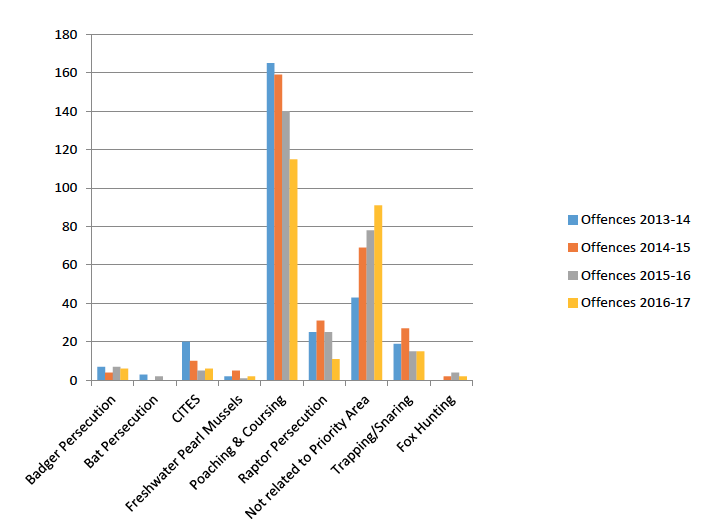
Source: Police Scotland
Table 15: Police Scotland disaggregated offence data from 2013-14 to 2016-17
| Type of crime | Number of offences | |||
|---|---|---|---|---|
| 2013-14 | 2014-15 | 2015-16 | 2016-17 | |
| Badger persecution | 7 | 4 | 7* | 6 |
| Bat persecution | 3 | 0 | 2 | 0 |
| CITES | 20 | 10 | 5 | 6 |
| Freshwater pearl mussels | 2 | 5 | 1 | 2 |
| Poaching and coursing | 165 | 159 | 140 | 115 |
| Raptor persecution | 25 | 31 | 25 | 11 |
| Not related to Priority Area | 43 | 69 | 78 | 91 |
| No crime recorded | - | - | 3 | - |
| Total | 265 | 278 | 261 | 231 |
| Additional breakdowns | ||||
| Trapping/snaring (all species)* | 19 | 27 | 15 | 15 |
| Fox hunting | 0 | 2 | 4 | 2 |
| Hunting with dogs (all Protection Wild Mammals Act offences) | - | - | 44 | 22 |
| Total | 19 | 29 | 63 | 39 |
Source: Police Scotland
* All Offences involving badgers, including Protection of Badgers Act and WCA (snaring) offences where badger is the target species. These offences may be duplicated elsewhere, for instance illegal killing of a badger by snaring would be recorded in ‘Badger persecution’ and ‘Trapping/snaring’
Table 16: Quarterly Police Scotland disaggregated offence data for 2016-2017
| Type of crime | Number of offences | |||
|---|---|---|---|---|
| 2016-17 | ||||
| |
Apr-Jun | Jul-Sep | Oct-Dec | Jan-Mar |
| Badger persecution | 2 | 1 | 1 | 2 |
| Bat persecution | 0 | 0 | 0 | 0 |
| CITES | 0 | 5 | 1 | 0 |
| Freshwater pearl mussels | 0 | 0 | 1 | 1 |
| Poaching and coursing | 28 | 47 | 16 | 24 |
| Raptor persecution | 9 | 2 | 0 | 0 |
| Not related to Priority Area | 44 | 15 | 11 | 21 |
| Total | 83 | 70 | 30 | 48 |
| Additional breakdowns | ||||
| Trapping/snaring (all species)* | 7 | 2 | 6 | 0 |
| Fox hunting | 1 | 0 | 0 | 1 |
| Hunting with dogs (all Protection Wild Mammals Act offences) | 5 | 4 | 5 | 8 |
| Total | 13 | 6 | 11 | 9 |
Source: Police Scotland
4.2 Badger persecution
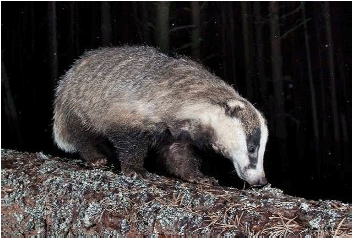
Badger © scotlandbigpicture.com
All badgers in Scotland are protected by law, but they are sometimes still illegally targeted by those who see them as a pest or for the purposes of illegal animal fights.
Reckless or intentional damage, destruction and interference to badger setts (including sett blocking) is an offence which may arise from unlicensed forestry,
agricultural or construction works.
Recorded crimes
Table 17 shows that there were six offences relating to badger persecution recorded by Police Scotland in 2016-17, compared to seven in 2015-16. Four of these offences were in relation to damage to a badger sett. Table 18 provides a quarterly breakdown of offences.
Table 17: Badger offences 2016-17 by Police Scotland Division
| Police Division | Type of offence | Number of offences |
|---|---|---|
| North East | Digging, damage and obstruction to sett | 1 |
| Edinburgh | Killing | 2 |
| Digging, damage and obstruction to sett | 1 | |
| Fife | Digging, damage and obstruction to sett | 1 |
| Dumfries and Galloway | Digging, damage and obstruction to sett | 1 |
| Total | 6 |
Source: Police Scotland
Table 18: Badger offences 2016-17 by species and quarterly breakdown
| Type of Crime | Apr-Jun | Jul-Sep | Oct-Dec | Jan-Mar | Total |
|---|---|---|---|---|---|
| Killing | 2 | 2 | |||
| Digging, damage and obstruction to sett | 0 | 1 | 1 | 2 | 4 |
| Total | 2 | 1 | 1 | 2 | 6 |
Source: Police Scotland
Figure 2: Police Scotland disaggregated offence data for badger persecution 2013-14 to 2016-17
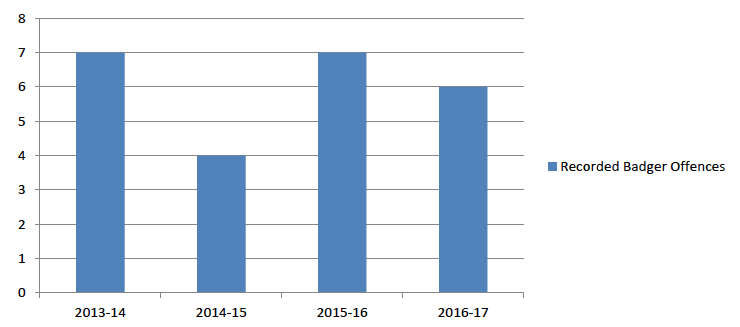
Source: Police Scotland
Health of species - Badger
Basic ecology:
At around 75cm long and between 8 – 12kg in weight, the badger is Britain’s largest carnivore. They live in social groups of around six but, exceptionally, up to 23 individuals. They live in burrow systems called setts which are often large with multiple entrances.
Their ideal habitat is deciduous woodland with grazed pasture nearby, but they will use most open habitats. The main component of their diet is earthworms and other underground grubs but they will eat other prey and vegetable matter, tubers and berries especially when worms are less easy to get during drought, for instance. Badgers are largely nocturnal, but are often also active in daylight hours during the summer months.
Current population in Scotland:
Badgers occur throughout mainland Scotland (and Arran where they were introduced) but the highest densities of population occur in Lothian and the Borders, then Fife, Dumfries and Galloway and the North East. The population density is generally lower in the highlands, Tayside and Argyll and central Scotland, although there are localised areas of high density such as around Inverness. This distribution largely reflects the distribution of soil depth and type suitable for sett excavation. A survey carried out by Scottish Badgers between 2006 and 2009 estimated that there were between 7,300–11,200 social groups in Scotland.
Population trends:
Comparison of the 2009 survey with previous estimates indicate a slight rise in population. This upward trend is apparently continuing as suggested by the most recent (2018) population estimate, which although likely to be an over-estimate, is significantly greater than previously.
Factors affecting the health of the population:
A major cause of mortality in badgers is road accidents. This can increase at certain times of the year when animals are dispersing as a natural part of their social organisation. It can also be made worse in periods of low food availability as the animals forage further from home. Loss of territory or sett sites due to development pressure can be an issue.
Badgers are known to be susceptible to bovine tuberculosis (bTB) and the possibility that the species might act as a reservoir for the disease has led to the control programmes in Southern England, Wales and Ireland. At present the Scottish cattle herd is free of bTB thanks largely to strict cattle import control.
However, there have been recent cases of bTB in cattle and road kill badgers in the area south of Penrith and this is of concern to Scotland.
Monitoring:
The Scottish Badgers distribution survey is an on-going project by volunteers. Disease monitoring in badgers is largely carried out via road casualties.
‘Health’ of the species:
The available evidence indicates that the badger population is rising. The threat from development should be attenuated by planning control, though it is still possible that unforeseen problems due to loss of foraging habitat may occur.
If the population of badgers grows then higher numbers as well as greater dispersal due to social pressure will mean that road casualties will be more likely.
References
Scottish Badgers (2009) Scottish Badger Distribution Survey 2006 - 2009
Scottish Natural Heritage (2015) About Badgers http://www.snh.gov.uk/about- scotlands-nature/wildlife-and-you/badgers/about-badgers/
Mathews, F., Kubasiewicz, L.M., Gurnell, J., Harrower, C., McDonald, R.A., Shore, R.F (2018). A review of the population and conservation status of British Mammals. A report by the Mammal Society under contract to Natural England, Natural Resources Wales and Scottish Natural Heritage.
4.3 Bat persecution
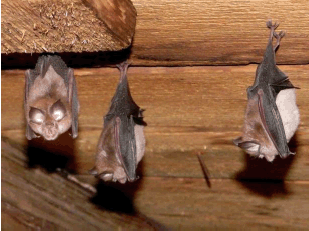
Bat roost © John Black
www.bats.org.uk
Bats and their roosts are protected by the Conservation (Natural Habitats, &c.) Regulations 1994), which gives strict legal protection to all species listed under Annex IV of the EU Habitats Directive – known as European Protected Species (EPS). Scotland’s bat population is relatively small compared to other parts of the UK.
Recorded crimes
There were no offences involving bat persecution recorded by Police Scotland in 2016-17.
Bats, their breeding sites and resting places are at particular risk from development works and evidencing the presence of bats in these cases can be very challenging. Police Scotland work closely with SNH bat specialists in the investigation of any alleged offences.
Figure 3: Police Scotland disaggregated offence data for bat persecution 2013-14 to 2016-17
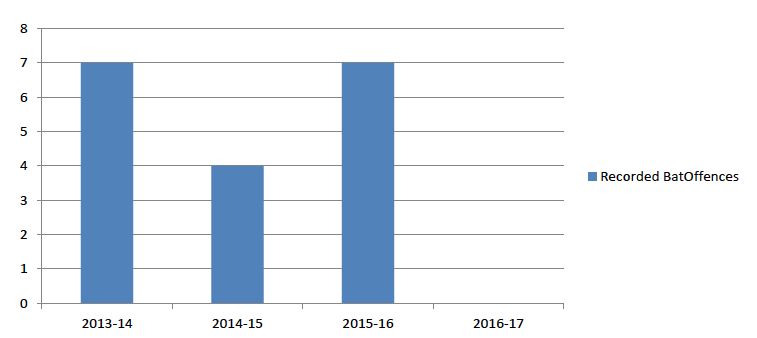
Source: Police Scotland
Health of species – Scottish bats
Basic ecology:
Bats are found throughout Scotland, including on many of the islands. In Shetland they occur as vagrants only. Ten species occur in Scotland, five of which are considered to be common and/or widespread (common pipistrelle, soprano pipistrelle, Daubenton’s bat, brown long-eared bat and Natterer’s bat). A further five are considered rare and/or range-restricted (whiskered bat, Brandt's bat, noctule, Nathusius’ pipistrelle and Leisler’s bat). In Scotland, the number of bat species living in an area generally decreases with distance travelled north and west. Common and soprano pipistrelles dominate the bat fauna of Scotland, between them probably comprising over 80% of the entire bat population.
Current population in Scotland:
Revised population estimates of most species have recently (2018) been published. The Scottish common pipistrelle population is currently estimated at 875,400, (but within the range 285,000 and 2,160,000). The current estimates for soprano pipistrelle and brown long-eared bat are 1,210,000 (range: 512,000 - 2,180,000) and 230,000 (range: 12,800 - 543,000), respectively[1].
Population trends:
Currently Scottish trends are available for three species: Daubenton’s bat; common pipistrelle and soprano pipistrelle. Populations of these species are considered stable. Of the remaining seven Scottish species, GB-level trends are available for three other species and (combined) whiskered/Brandt bat. Thus, populations of brown long-eared bat, noctule and whiskered/Brandt's bat are all considered to have been stable since 1999. There is some evidence that Natterer's bat may have increased over the same period.
Monitoring:
British bats are monitored via the National Bat Monitoring Programme, which uses data from four different types of annual survey bats across Britain.
Factors affecting the health of the population:
The dependence of bats on a number of specific habitat types for summer roosting sites, winter hibernation sites, commuting and foraging, means that they are particularly vulnerable to land use change. Many bat populations suffered serious declines in the second half of the twentieth century, driven by habitat loss, development and disturbance or destruction of roosts. The widespread use of highly toxic timber treatment chemicals was a contributory factor to this, but fortunately much safer compounds are now commonly in use which present little or no threat to bats if used correctly. There are three main types of roost:
- Buildings such as houses, churches, farms, bridges, ancient monuments, fortifications, schools, hospitals and all sorts of industrial buildings. These are most important in summer, though some are used throughout the year
- Underground places such as caves, mines, cellars, ice-houses and tunnels. These are most important for hibernation as they give the cool, sheltered and stable conditions that bats need during winter
- Tree holes - these are used by bats throughout the year
Health’ of the species:
Common and soprano pipistrelles, and brown long-eared bats are the species that are most frequently encountered in buildings and are therefore most likely to be the subject of wildlife crime in the form of unauthorised disturbance, or damage to, and/or destruction of their roosts.
On-going threats to Scottish bats include pressure from human disturbance to roosting sites and foraging grounds. For example, changes to agricultural and forestry practices which alter landscapes, or affect the availability of insect prey, such as pesticide use, could negatively impact bat populations. Roosts may be lost during development through demolition or renovation of buildings without provisions to replace roosting sites, and there is limited information on the success of replacement roosts as part of compensation measures. Also changes in building practices to improve energy efficiency mean that new buildings may offer fewer roosting opportunities.
References
Bat Conservation Trust, 2017. The National Bat Monitoring Programme. Annual Report 2016. Bat Conservation Trust, London. Available at http://www.bats.org.uk/pages/nbmp_annual_report.html
Mathews, F., Kubasiewicz, L.M., Gurnell, J., Harrower, C., McDonald, R.A., Shore, R.F (2018). A review of the population and conservation status of British Mammals. A report by the Mammal Society under contract to Natural England, Natural Resources Wales and Scottish Natural Heritage.
4.4 Convention on International Trade in Endangered Species of Wild Fauna and Flora (CITES)
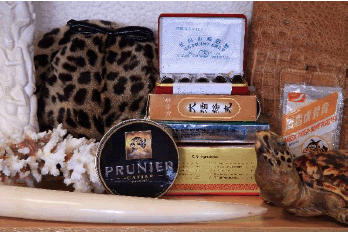
Illegal Products © Charlie Everitt
CITES is the Convention on International Trade in Endangered Species of Wild Fauna and Flora. It is an international agreement between governments, which aims to protect certain animal and plant species from over-exploitation by trade.
In Scotland and the rest of the UK, this agreement is given legal authority by the
Control of Trade in Endangered Species (Enforcement) Regulations 1997, known as COTES.
Recorded crimes
Table 19 and Figure 4 show that six CITES-related offences were recorded by Police Scotland in 2016-17, compared to five in 2015-16. These six offences related to 3 incidents, involving the trading in endangered species in Tayside, the Lothians and the Scottish Borders. These included tiger, leopard skin and elephant ivory.
Table 19: Summary of 2015-16 CITES offences
| Police Division | Type of Offence | Date |
|---|---|---|
| Tayside | Unlicensed trade in taxidermy (wildcat). | July 2016 |
| The Lothians and Scottish Borders | Trade in endangered species (tiger). | August 2016 |
| Trade in endangered species (elephant). | August 2016 | |
| Trade in endangered species (Asian bear). | August 2016 | |
| Trade in endangered species (leopard). | August 2016 | |
| Trade in endangered species (snow Leopard skin rug). | January 2017 |
Source: Police Scotland
Figure 4: Police Scotland disaggregated offence data for CITES 2013-14 to 2015-16
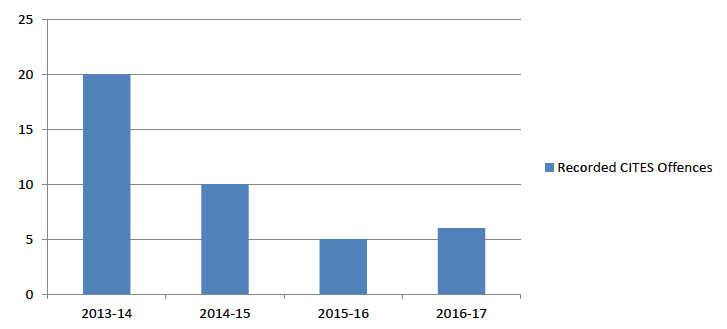
Source: Police Scotland
Police Scotland expect the numbers of recorded offences to increase in future years, due to increased public awareness and reporting of illegal wildlife trading, particularly online.
4.5 Freshwater Pearl Mussels
Scotland supports several of the largest remaining populations of freshwater pearl mussels (FWPM) in the world some of which continue to be damaged by criminal activity. Pearl fishing continues in Scotland, almost uniquely within Europe. FWPM are also threatened by unlawful river engineering and pollution.
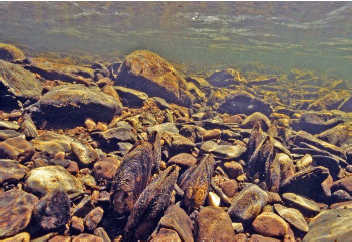
Freshwater pearl mussels © Sue Scott SNH
Recorded crimes
Police Scotland recorded two offences in relation to FWPM during 2016-17 both in relation to the taking of FWPM. This compares to one offence in 2015-16.
Table 20: Summary of 2016-17 FWPM offences
| Police Division | Type of Offence | Date |
|---|---|---|
| Highland and Islands | Taking of FWPM | October 2016 |
| Highland and Islands | Taking of FWPM | January 2017 |
Source: Police Scotland
Figure 5: Police Scotland Disaggregated Offence Data for freshwater pearl mussels
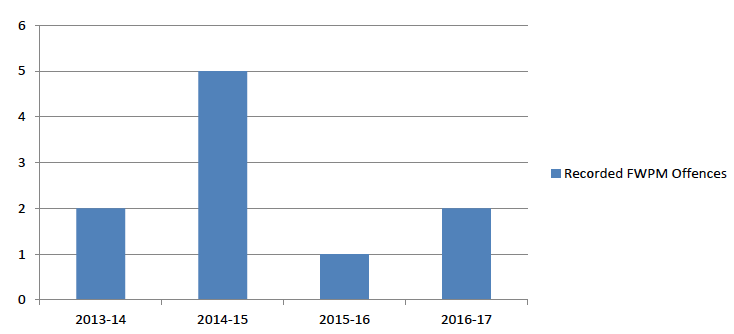
Source: Police Scotland
Health of species – FWPM
Basic ecology:
The freshwater pearl mussels is one of the longest-lived invertebrates known, and can survive for over 100 years. The mussels live in the gravel beds of clean rivers. They feed by filtering water, removing fine particles, which helps to keep our rivers clean and benefits other species like salmon and trout. Mussel larvae spend the first few months of their lives attached to the gills of young salmon and trout, so healthy fish populations are vital to their lifecycle. Their complex lifecycle is extremely delicate, making the freshwater pearl mussel very vulnerable to adverse conditions.
Current population in Scotland:
Freshwater pearl mussels are critically endangered in Europe, with Scotland representing one of their remaining strongholds. The national survey published in 2015 found that there are freshwater pearl mussel populations in 115 watercourses in Scotland with the majority of these rivers located in the Highlands and the Western Isles. Freshwater pearl mussel populations showed evidence of recent, successful recruitment in 71 of those rivers. In the remaining rivers, only adult mussels were present with no apparent recruitment.
Population trends:
Across Europe there have been dramatic declines in the distribution of freshwater pearl mussels. For example in the last century it has been estimated that there was a 95-100% decline in known populations in central and southern Europe.
Although there have not been such dramatic declines in Scotland, between the two national surveys in 1999 and 2015, freshwater pearl mussels became extinct from a total of 11 watercourses. As such, and despite considerable conservation efforts, there is an ongoing decline in the number of freshwater pearl mussel populations.
Factors affecting the health of the population:
Freshwater pearl mussels have extremely demanding habitat requirements and an unusual and sensitive lifecycle. One of the main factors that affect the health of populations is wildlife crime and freshwater pearl mussels have been exploited in Scotland since Roman times. The freshwater pearl mussel was given full legal protection in 1998. But since then continued persecution has badly damaged many populations which struggle to recover because of the mussel’s slow growth rate.
Water pollution and damage to river beds and banks can also seriously affect freshwater pearl mussel populations. Anything that affects the status of local salmon and/or trout stocks also has the potential to affect the mussels by interfering with their lifecycle.
Monitoring:
Our most critical freshwater pearl mussel populations are monitored every six years as part of SNHs Site Condition Monitoring programme. More widely, SNH has also commissioned two national surveys in Scotland to assess the status of populations across the country.
‘Health’ of the species:
The species is categorised as ‘critically endangered’ in Europe by the International Union for the Conservation of Nature (IUCN). There have also been apparent extinctions from 11 watercourses in Scotland since the start of the current century. Several populations are showing signs of recovery or are stable, principally as a result of considerable conservation efforts by a wide partnership of public, private and charitable organisations. However wildlife crime continues to pose a significant risk to these efforts and the status of vulnerable populations.
References
Cosgrove, P., Watt, J., Hastie, L., Sime, I., Shields, D., Cosgrove, C., Brown, L., Isherwood, I. and Bao, M., 2016. The status of the freshwater pearl mussel Margaritifera margaritifera in Scotland: extent of change since 1990s, threats and management implications. Biodiversity and Conservation, 25(11), pp.2093-2112. Moorkens, E. 2011. Margaritifera margaritifera. The IUCN Red List of Threatened Species 2011. Downloaded on 10 November 2017.
Sime I. 2015. Freshwater pearl mussel. Version 1.0. In The Species Action Framework Handbook, Gaywood MJ, Boon PJ, Thompson DBA, Strachan IM (eds). Scottish Natural Heritage, Battleby, Perth.
Watt, J, Cosgrove, P.J & Hastie, L.C. 2015. A national freshwater pearl mussel (Margaritifera margaritifera, L.) survey of Scotland. Scottish Natural Heritage Commissioned Report No. 901.
FWPM priority delivery group
The overall objective of the FWPM priority delivery group is to raise awareness of the threat posed by criminality and help communities in hotspots to prevent criminality and identify offenders.
The FWPM delivery group continued to be active in 2016-17. The Pearls in Peril LIFE+ project finished in March 2017, having established ‘Riverwatch’ schemes in all rivers and catchments designated as Special Areas of Conservation in Scotland. Riverwatch patrols also took place in important populations across the Highlands. These patrols were to help support wider awareness raising activities that help local communities detect suspicious activity in their local rivers and encourage them to report it to the local Police.
The National Wildlife Crime Unit and Police Scotland undertook further work to complete ‘Operation Caesar’, investigating potential routes for the sale of freshwater pearls collected in Scotland.
Training was also provided to fishery bailiffs and countryside rangers to continue improving awareness of the species and the threats that criminality poses to its conservation. During 2016 proactive, intelligence-led operations by Police Scotland also took place at key sites around Loch Ness and the Kyle of Sutherland to help reduce the threat posed by wildlife crime.
Investigations continued following alleged pearl fishing and pollution incidents, and news releases were also issued to the national media.
4.6 Poaching and coursing
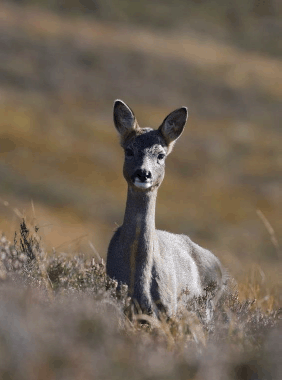
Deer © Lorne Gill SNH
Poaching involves the taking of deer, fish or other game without permission, or using unlawful methods. Coursing is the hunting of animals with dogs. This section sets out the new Police Scotland disaggregated data in addition to providing an overview on the work of the Poaching & Coursing Priority Delivery Group.
Recorded crimes
During 2016-17, 115 poaching and coursing offences were recorded by Police Scotland. This was a decrease from 140 offences recorded in 2015-16. Table 21 shows the North East Division has the highest number of recorded hare coursing offences at 10, while Highland and Islands has the highest number of recorded fish poaching offences at 21.
Table 21: Poaching and coursing offences 2016-17 by Police Scotland Division
| Police Division | Target Species | Number of offences |
|---|---|---|
| North East | Deer | 1 |
| Fish | 11 | |
| Hare | 10 | |
| Forth Valley | Fish | 8 |
| Unknown | 1 | |
| Tayside | Fish | 1 |
| Hare | 8 | |
| Glasgow | Deer | 1 |
| Fish | 1 | |
| The Lothians and Scottish Borders | Deer | 1 |
| Hare | 8 | |
| K Division – Renfrewshire and Inverclyde | Deer | 2 |
| Fish | 3 | |
| Unknown | 1 | |
| Argyll and West Dunbartonshire | Deer | 3 |
| Fish | 9 | |
| Highland and Islands | Deer | 6 |
| Fish | 21 | |
| Game bird | 2 | |
| Hare | 3 | |
| Fife | Hare | 2 |
| Fish | 8 | |
| Dumfries and Galloway | Deer | 2 |
| Hare | 2 | |
| Total | 115 |
Source: Police Scotland
Table 22 shows that fish poaching offences remain the most commonly recorded at 62 offences, while hare coursing accounts for a further 33 offences. Game bird poaching offences remain the least commonly recorded at 2.
Most fish poaching offences were in relation to salmon, and show a seasonal bias towards the months from April to September.
Table 22: Poaching offences 2016-17 by species and quarterly breakdown
| Target species | Apr-Jun | Jul-Sep | Oct-Dec | Jan-Mar | Total |
|---|---|---|---|---|---|
| Deer | 12 | 3 | 1 | 16 | |
| Fish | 14 | 38 | 6 | 4 | 62 |
| Game Bird | 2 | 2 | |||
| Hare | 2 | 6 | 7 | 18 | 33 |
| Unknown | 2 | 2 | |||
| Total | 28 | 47 | 16 | 24 | 115 |
Source: Police Scotland
Figure 6: Police Scotland disaggregated offence data for poaching and coursing 2013-14 to 2016-17
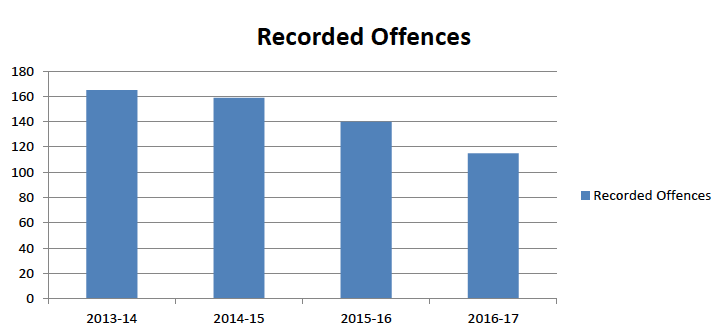
Source: Police Scotland
Health of species - Red and Roe deer
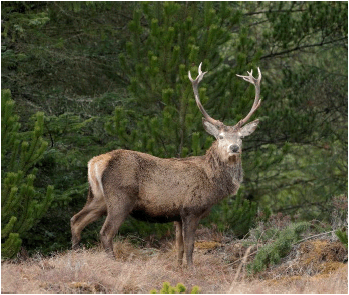
Deer © Lorne Gill SNH
Basic ecology:
Red deer have adapted to living on open hillsides and moorlands throughout much of Scotland. They can also be found in coniferous and deciduous forests. Although symbolic of wild and remote areas, red deer now also occupy areas closer to people, even entering some suburbs. Red deer graze and browse a wide variety of plants including grasses, red deer heather, shrubs and trees.
Roe deer are generally seen in loose family groups or as individual animals. They are generally found in woodlands, particularly around the edges where the woodland meets open ground, including farmland. They are increasingly found in and around our towns. Their diet includes a variety of woodland plants including herbs, brambles, ivy, heather, bilberry & coniferous tree shoots[2].
Current population in Scotland:
Both red and roe deer are common and widespread species throughout Scotland, with the exception of some islands. Red deer are distributed across much of northern Scotland, Argyll, the Trossachs and Galloway. Up-to-date national population estimates for red and roe deer are required[3]. Previous estimates for red deer in 2000 were between 360,000 and 400,000[4]. Roe deer are particularly difficult to count because of their secretive nature and woodland habitat. The most recent estimate is 200,000 – 350,000[5].
Population trends:
The latest work on deer population trends is due to be published soon. Results thus far indicate that since 1960 the population of red deer on the open ground has increased but in the last 15 years the population growth has halted. National trends for deer populations within woodlands are uncertain due to the considerable challenges in counting them. Estimates for both private woodlands and the National Forest Estate suggest a decline in woodland deer populations (of which roe is the most common) in the last 15 years.
Factors affecting the health of the population:
All species of wild deer, particularly red deer on open hill ground, can be subject to winter mortality in prolonged or severe winters. This can be reduced if land managers have taken potential welfare issues into account. Deer stalking is carried out to regulate numbers. Both species of deer are subject to Deer Vehicle Collisions and whilst these appear to be increasing they are not likely to impact on the overall deer populations.
Disease and poaching may also impact on the health of deer, although there is no evidence to suggest that either are having an impact at the population level. Awareness of potential new diseases e.g. Chronic Wasting Disease is promoted through organisations such as the British Deer Society and deer poaching is a wildlife crime priority.
Monitoring:
Actions to monitor the numbers and impacts of red deer in the uplands are included in the Deer Management Plans (DMPs) produced by Deer Management Groups (DMGs). The next assessment of DMGs is due in 2019. Safeguarding the welfare of wild deer is one of the criterion against which their DMPs will be assessed. Safeguarding the welfare of wild deer is also included as a requirement in the Code of Practice on Deer Management (Deer Code). SNH monitors the extent of compliance with the Deer Code and presents a report to Scottish Ministers every 3 years. The first report is due in June 2019.
‘Health’ of the species:
There is no current explicit monitoring of the health of wild deer species. However, there are stop gaps in place which should highlight any issues, including standard checks at deer larders. There is also a provision in the Deer Act as amended by the WANE Act to use regulation if there is damage to deer welfare. In addition to this the Lowland Deer Network Scotland have recently launched a deer health survey to ‘establish the prevalence or otherwise of a number of health risks across all of Scotland’s wild deer species’. To date there is no evidence to suggest that there are any significant issues with the health of wild deer at a national or population level.
References
Gaywood MJ, Boon PJ, Thompson DBA, Strachan IM (eds). 2016. The Species Action Framework Handbook. Scottish Natural Heritage
Scottish Natural Heritage, 2016. Deer Management in Scotland: Report to the Scottish Government from Scottish Natural Heritage 2016
Scottish Natural Heritage, 2013. Written submission from Scottish Natural Heritage to Rural Affairs, Climate Change and Environment Committee on 20 November 2013
Wild Deer Best Practice Guidance
Health of Species - Brown hare (Lepus europaeus)
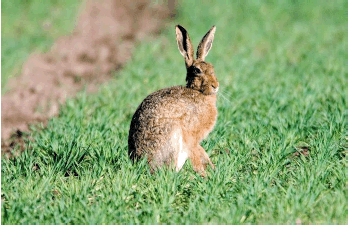
Brown hare © Lorne Gill SNH
Basic ecology:
In Britain the brown hare is a farmland animal that thrives best on arable ground where the highest population densities are to be found. In Scotland the best habitats for brown hares are in the east, broadly corresponding with the best agricultural land. Thus, much of the area from the Moray Firth, through lowland Aberdeenshire, lowland Tayside, Fife, parts of the Central Belt, East Lothian and the Borders contain optimum habitat for brown hares. However, the species is present elsewhere in Scotland where suitable habitat exists, generally below ~300m asl. Above this altitude, it tends to be replaced by the mountain hare, where the latter is present.
Although hares prefer open country, they tend to avoid pastures with high densities of livestock, so they are most often found in fields without stock or where the stocking densities are very light. They need cover to hide from predators (notably foxes) so arable areas with nearby hedgerows, strips of woodland or other cover (e.g. set aside) are preferred.
Population trends:
There was a significant decline in the brown hares (based on the numbers shot) during the latter part of the 20th century. National Gamebag Census (NGC) data for Scotland as a whole, collected by the Game & Wildlife Conservation Trust, indicate a significant decline in the bag index between 1961 and 2009 but the trend has stabilised at a low level since 1985. However, caution is needed when interpreting game bag data because of the absence of a consistent measure of control effort. This decline resulted to the brown hare being listed as a Priority Species in the UK Biodiversity Action Plan (1995). The key causal factors were all associated with changes in agricultural land-use, specifically: the conversion of grassland to arable; loss of habitat diversity in the agricultural landscape; and changes in planting and cropping regimes.
Factors affecting the health of the population:
Brown hares are a quarry species and driven shoots (mostly confined to areas with fox control and high brown hare density, i.e. 0.1 - 0.4/ha) can reduce populations by 30 - 70%. Other illegal forms of hunting including hare coursing may add to this, although mortality involving dogs has been quantified as being comparatively low, reducing the population by <7%. Other anthropogenic mortality is associated with agricultural machinery and in the form of road casualties.
Monitoring:
Since 1995, data on brown hare abundance have also been collected under the Breeding Bird Survey (BBS) organised by the British Trust for Ornithology. This has reported a relatively stable trend for the UK as a whole since the start of the survey. The NGC UK trend is broadly similar.
‘Health’ of the species:
In the mid-1990s the Scottish brown hare population was estimated to be around 187,250 (but within the range 155,813 - 218,687). The most recent estimate (2017) is 73,100, but as the true value could be between 53,700 and 301,000, it cannot be interpreted as evidence for a decline. A 2017 assessment of the future prospects of brown hares, in terms of whether the population size, range and habitat quality are likely to increase, decrease or remain stable, indicates that all of these are likely to remain stable.
References
Mathews, F., Kubasiewicz, L.M., Gurnell, J., Harrower, C., McDonald, R.A., Shore, R.F (2018). A review of the population and conservation status of British Mammals. A report by the Mammal Society under contract to Natural England, Natural Resources Wales and Scottish Natural Heritage
Health of species – Atlantic salmon
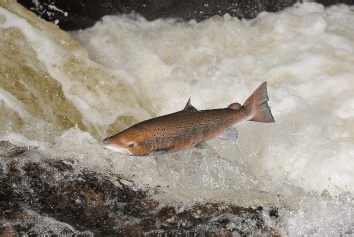
Salmon © Lorne Gill SNH
Basic ecology:
Atlantic salmon are found in the temperate and arctic regions of the northern hemisphere. They occur in the rivers of the countries that border both sides of the North Atlantic Ocean, and the Baltic Sea. As an anadromous species, Atlantic salmon live in freshwater as juveniles but migrate to sea as adults before returning up river to spawn.
Atlantic salmon usually return to their native river, and even the same stretch of the river from which they were born. This means that many ‘populations’ of Atlantic salmon may exist within the same river and contribute to the overall stock of that species within a catchment.
After returning to freshwater, spawning usually occurs from November to December, but may extend from October to late February in some areas, particularly larger rivers. About 90 to 95% of all Atlantic salmon die after spawning has taken place. Those that survive migrate to sea and may spawn again on their return to freshwater.
Population trends:
Atlantic salmon stocks have declined across much of their global geographical range. In Scotland, where the annual rod catch is used as a broad indicator of trends in the size of the spawning population, adult abundance is also influenced by the activity of distant water and coastal net fisheries. The latter of these (mixed stock coastal fisheries) has been placed under a three-year moratorium in Scotland to protect declining stocks. Rod-catch data, available from 1952 to the present day, show that considerable variation in annual abundance exists within each of the 109 Fishery Districts and also among individual stock components.
Current population in Scotland:
While the available data suggests that the overall number of Atlantic salmon returning to Scottish rivers had increased in recent history, with the highest recorded rod catch occurring in 2010. Since 2010, however, the recorded rod catch has dropped in each subsequent year and the 2017 catch was the fourth lowest on record.
Factors affecting the health of the population:
The complex anadromous life cycle means that Atlantic salmon populations can be affected by developments both in freshwater and at sea. In freshwater, issues such as water quality, connectivity from the river mouth to potential spawning areas and predation (both by predators such as piscivorous birds, otters, seals and man) can be significant. In the marine environment, poor survival of one-sea winter fish means that only 3.2% of those fish which leave Scotland return to spawn as adults.
Monitoring:
NASCO (the North Atlantic Conservation Organisation) and ICES (the International Council for Exploration of the Seas) Working Group on North Atlantic Salmon maintain an overview of Atlantic salmon stocks and their management throughout their global range and this drives science and management at an international level.
Since 2015 a new system of management has come into force in Scotland. The development of Conservation Limits for each Salmon Fishery District, or each river if rod-catch data is available, determines what level of exploitation (re-assessed on an annual basis) will be allowed in order to conserve stocks. As a consequence, killing of fish is now banned in a number of rivers across Scotland. For more information see Conservation of Wild Salmon.
Monitoring of the long-term decline in the spring multi-sea-winter stock component has led to the development of specific management legislation. It is now illegal to kill any Atlantic salmon (which are principally ‘spring salmon’) caught from January to 1 April under The Conservation of Salmon (Annual Close Times and Catch and Release) (Scotland) Regulations 2014. In three rivers (Annan, Eachaig and Esk), the annual close time extends beyond this date.
The development of an Atlantic salmon Conservation Plan is now considered mandatory for all rivers, or Atlantic salmon management units (if taking several small rivers together).
Atlantic salmon populations have been included as features within 17 Special Areas of Conservation, and these have been monitored every six years as part of SNH’s Site Condition Monitoring programme.
‘Health’ of the species:
The species is categorised as ‘least concern in Europe by the IUCN, although this categorisation has not been updated since 1996.
The illegal exploitation of Atlantic salmon continues to occur in both inland and estuarine coastal areas and is carried out by both individuals and organised groups. This includes the capture of Atlantic salmon by legal and illegal methods outwith weekly and annual close times. The value of fish lost to illegal exploitation is not reported annually on a national basis, but may be significant in areas where it is known to occur. The fragile nature of some stock components, such as the declining 'spring' fish may mean that illegal exploitation could result in serious impacts at the population level.
References
Hendry, K. & Cragg-Hine, D. (2003). Ecology of the Atlantic Salmon. Conserving Natura 2000 Rivers Ecology Series No. 7. English Nature, Peterborough.
ICES (2018). Report of the Working Group on North Atlantic Salmon (WGNAS). 4–13 April 2018, Woods Hole, MA, USA. ICES CM 2018/ACOM:21
NASCO (2007). Atlantic salmon Implementation Plan, European Union – UK (Scotland). NASCO document IP(07)19 Final.
Windsor, M.L., Hutchinson, P., Petter Hansen, L. & Reddin, D.G. (2012). Atlantic salmon at sea: Findings from recent research and their implications for management. NASCO document CNL 12(60).
Electronic references
The IUCN Red List of Threatened Species. http://www.iucnredlist.org
Marine Scotland Science (2018). Proposed gradings for rivers and assessment groups for the 2019 fishing season. https://scotland.shinyapps.io/sg-salmon-conservation/
NASCO Salmon Rivers Database http://www.nasco.int/RiversDatabase.aspx
Poaching and coursing priority group
The Poaching and Coursing Priority Delivery Group continued its work to advise and support the Police and others, particularly in respect of increasing of awareness of crime and promoting better reporting of offences.
Ongoing work of the Group included:
- A briefing paper titled “Hare Coursing & Deer poaching & Fresh water mussel crimes”, it exhibits photographs of evidence post scene of crime and sets out the offences related
- Venison Dealers Licences, analysis of 2017 returns data will be compared to next year’s data, enabling checks to be made with Local Authorities.
- Food Standards Scotland, consideration of “Problem Profiles” in the Game and Venison industry will be undertaken
- Analysis of hare coursing statistics
- As fish poaching Prosecutions remain high, a dedicated enforcement committee was established by Fisheries Management Scotland. Going forward, they will develop ideas for future legislative change in the 2018/19 session. The Poaching and Coursing Priority Group will assist the fishing sector to develop an increase in awareness in fishing enforcement regulations
Reports from the Courts indicated that several hare coursing cases have been prosecuted, the proceedings have been successful and sentencing in some cases has been stringent.
Fisheries Management Scotland (FMS) represent the network of 41 local district salmon fishery boards (DSFBs) who have statutory powers for delivering fisheries enforcement in Scotland. Police Scotland have collaborated on reciprocal training events with FMS and member DSFBs, with the aim of partnership working to improve detection and prevention of fish poaching at local and strategic level. The poaching of fish, particularly salmon and sea trout remains the highest volume offence.
4.7 Raptor persecution
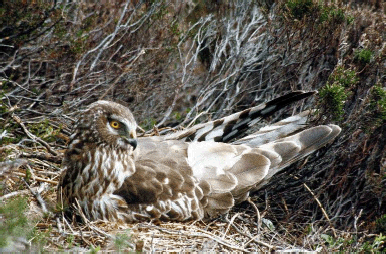
Hen harrier © Sandy Sutherland SNH
Raptor, or bird of prey, persecution is the most high profile type of wildlife crime in Scotland and it can have serious impacts on the populations of some bird of prey species at local, regional or (if carried out more widely) national level.
This section presents Police Scotland disaggregated data and SASA poisoning figures in relation to raptor offences.
Recorded crimes
Recorded raptor persecution offences fell in 2016-17, with 11 offences recorded compared to 25 in 2015-16. Table 15 and show the numbers of recorded crimes for the period 2013-14 to 2016-17.
Figure 7: Police Scotland disaggregated offence data for raptor persecution
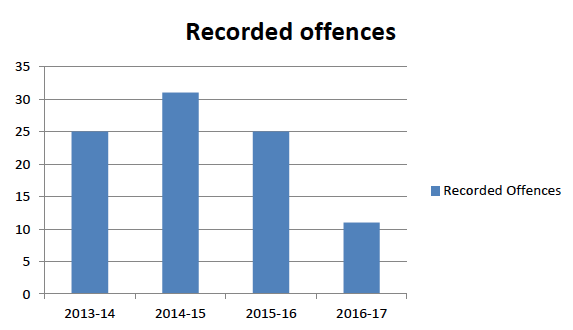
Source: Police Scotland
Poisonings and other recorded crimes
Table 23 shows the numbers of birds of prey confirmed by SASA as illegally poisoned between 2012-13 and 2016-17, alongside the number of incidents which resulted in these poisonings. The figures show that buzzards (21) remain the most commonly recorded victim of illegal poisoning over the five year period, followed by red kites (18) and Peregrine falcons (2).
Table 23: Bird of prey poisonings, Scotland, 2012-13 to 2016-17
| Year | Number of birds of prey poisoned (by species) |
Number of Incidents | ||||
|---|---|---|---|---|---|---|
| Buzzard | Red kite | Golden eagle | Peregrine falcon | All | |
|
| 2012-13 | 3 | 1 | 4 | 4 | ||
| 2013-14 | 7 | 12 | 1 | 1 | 21 | 6 |
| 2014-15 | 3 | 3 | 1 | 7 | 6 | |
| 2015-16 | 5 | 1 | 6* | 5* | ||
| 2016-17 | 3 | 1 | 4 | 3 | ||
| Total | 21 | 18 | 1 | 2 | 42 | 24 |
Source: Science and Advice for Scottish Agriculture (SASA)
Data for financial year period 1 April 2012 - 31 March 2017
*One incident involved two birds
The number of poisoning incidents over the last five years has remained relatively low and has been consistently falling. However, illegal poisoning still has the capacity to kill high numbers of birds. For example, the large discrepancy in 2013-14 between the numbers of birds poisoned (21) and the number of incidents (6) was due to a single mass poisoning incident in Ross-shire, where 12 red kites and four buzzards were confirmed to have been killed with an illegal pesticide.
Figure 8: Bird of prey poisonings 2012-13 to 2016-17
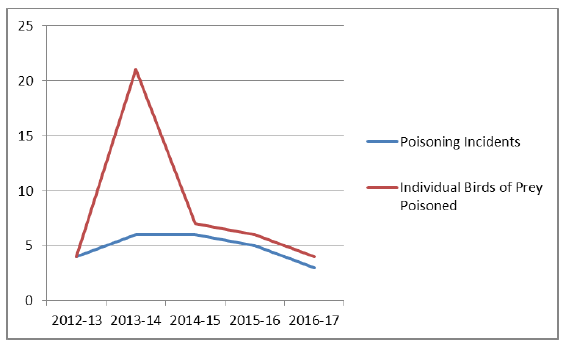
Source: SASA
Table 24 and Table 25 show a summary of bird of prey incidents recorded by Police Scotland from 2013-17 and offences recorded in 2013-17. A direct comparison between the datasets is not possible as incidents may involve multiple offences. However the tables do demonstrate general trends. As with the SASA poisoning data, these figures show that the buzzard (involved in 30 of the 73 cases) was the species most commonly affected.
Shooting remains the highest recorded crime type for the period (25), followed by poisoning (22).
Financial year data for wider bird of prey crime is currently only available from 2013-14 onwards. Subsequent reports will use offence data to enable direct comparisons between datasets.
Table 24: Recorded bird of prey cases in Scotland, 2013-14 to 2016-17 by species involved
| Number of Cases (by species involved) | |||||||||||
|---|---|---|---|---|---|---|---|---|---|---|---|
| Buzzard | Hen Harrier | Peregrine | Red Kite | Golden Eagle | Goshawk | Osprey | Red Kite & Buzzard | Tawny Owl | Unknown | Total | |
| 2013-14 | 8 | 2 | 2 | 2 | 1 | 1 | 1 | 1 | 1 | 19 | |
| 2014-15 | 6 | 1 | 3 | 4 | 1 | 1 | 1 | 1 | 18 | ||
| 2015-16 | 12 | 2 | 1 | 4 | 1 | 1 | 2 | 1 | 1 | 25 | |
| 2016-17 | 4 | 1 | 1 | 1 | 3 | 1 | 11 | ||||
| Total | 30 | 5 | 7 | 10 | 4 | 4 | 6 | 3 | 2 | 2 | 73 |
Source: Police Scotland
Figures from 2013-2014 and 2014-2015 relates to incident data, which may include multiple offences and victims. Figures from 2015-16 and 2016-17 relates to offence data, which relates to individual offences.
Table 25: Recorded bird of prey cases in Scotland, 2013-14 to 2016-17 by type of crime
| Number of Cases (by type of crime) | |||||||
|---|---|---|---|---|---|---|---|
| Disturbance | Egg stealing | Other | Poisoning | Shooting | Trapping | Total | |
| 2013-14 | 2 | 6 | 8 | 3 | 19 | ||
| 2014-15 | 1 | 2 | 6 | 8 | 1 | 18 | |
| 2015-16 | 3 | 3 | 6* | 8 | 6* | 26 | |
| 2016-17 | 4 | 1 | 3 | 2 | 1 | 11 | |
| Total | 10 | 1 | 5 | 21 | 26 | 11 | 74 |
Source: Police Scotland
* one incident involved both trapping and poisoning
Figures from 2013-2014 and 2014-2015 relates to incident data, which may include multiple offences. Figures from 2015-16 and 2016-17 relates to offence data, which relates to individual offences.
Table 26 shows that Tayside Division recorded the highest number of offences in relation to birds of prey with three offences of the 11 total. Buzzards account for four of the 11 recorded offences.
Table 26: Summary of recorded bird of prey offences in Scotland 2016-17 by Police Scotland Division
| Police Division | Target Species | Number of offences |
|---|---|---|
| North East | Eagle | 1 |
| Gosshawk | 1 | |
| Forth Valley | Osprey | 1 |
| Tayside | Buzzard | 2 |
| Osprey | 1 | |
| The Lothian and Scottish Borders | Peregrine | 1 |
| Highlands and Islands | Buzzard | 1 |
| Ayrshire | Buzzard | 1 |
| Dumfries and Galloway | Osprey | 1 |
| Red Kite/Buzzard | 1 | |
| Total | 11 |
Source: Police Scotland
Table 27 shows a majority of recorded bird of prey offences occurring during April to June, with nine of the 11 total offences.
Table 27: Bird of prey offences 2016-17 by species and quarterly breakdown
| Target species | Apr-Jun | Jul-Sep | Oct-Dec | Jan-Mar | Total |
|---|---|---|---|---|---|
| Buzzard | 3 | 1 | 4 | ||
| Eagle | 1 | 1 | |||
| Goshawk | 1 | 1 | |||
| Osprey | 3 | 3 | |||
| Peregrine | 1 | 1 | |||
| Red kite/Buzzard | 1 | 1 | |||
| Total | 9 | 2 | 0 | 0 | 11 |
Source: Police Scotland
Table 28 provides a detailed breakdown of bird of prey offences for the period 2016-17. Buzzards are associated with all poisoning offences (buzzard/red kite in one case). Buzzards are Scotland’s most common bird of prey and are carrion feeders, therefore are more likely to be susceptible to poison than other species.
Table 28: Details of recorded bird of prey offences in Scotland 2016-17
| Species Targeted | Police Division | Type of offence | Month text and year |
|---|---|---|---|
| Goshawk | North East | Shooting | April 2016 |
| Buzzard | Tayside | Trapping | May 2016 |
| Eagle | North East | Disturbance | May 2016 |
| Osprey | Tayside | Disturbance | May 2016 |
| Osprey | Dumfries and Galloway | Disturbance | May 2016 |
| Peregine | The Lothians and Scottish Borders | Egg Stealing | May 2016 |
| Buzzard | Tayside | Shooting | June 2016 |
| Buzzard | Ayrshire | Poisoning | June 2016 |
| Osprey | Forth Valley | Disturbance | June 2016 |
| Buzzard | Highland and Islands | Poisoning | September 2016 |
| Red Kite/Buzzard | Dumfries and Galloway | Poisoning | September 2016 |
source: Police Scotland
Health of species - Golden eagle
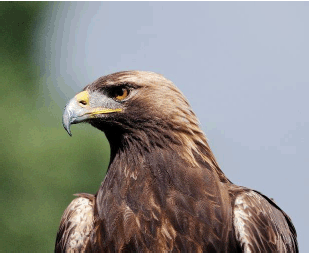
Golden eagle © Lorne Gill SNH
Basic ecology:
Golden eagles are very large raptors which have a wide diet. Live prey consists mainly of medium sized birds and mammals although they will take smaller and larger prey too. They also scavenge carrion mostly sheep and deer in Scotland. The majority nest on cliffs although some nest in trees especially where suitable cliffs are scarce.
Whilst adults are territorial and remain on territory throughout the year, young immature birds wander widely. It takes around five years for eagles to reach breeding age. They are primarily birds of open upland habitats.
Current population in Scotland:
The most recent national survey was in 2015 with 508 territorial pairs recorded (Hayhow et al 2017). The species is found widely across the Highlands and Islands primarily in upland habitats with a small population in the Southern Uplands. Concentrations, including some of the highest densities recorded in Europe, are found in the Outer and Inner Hebrides and parts of the West Highlands.
Population trends:
The population has increased since the previous national survey in 2003 and has passed the 500 pair target stated in the SNH Golden Eagle Conservation Framework report (Whitfield et al 2008) as being required to reach favourable conservation status. However there are regional differences with little change in the Southern Uplands and parts of the central and eastern Highlands from previous surveys.
Factors affecting the health of the population:
Natural mortality can include collisions with power lines and starvation during the winter as well as disease. Long term changes to land management including intensive grazing reducing live prey capacity and forestry reducing open habitats have been raised as concerns. The recent national survey suggested there was no evidence of wind farm impacts on the population to date. Illegal persecution regionally remains a significant concern. The recent Scottish Government review of ‘missing’ satellite tagged young golden eagles highlighted four geographical areas where further action should be considered.
Monitoring:
Around half the breeding population is monitored annually by Scottish Raptor Study Group members and other volunteers (Challis et al 2018). The South Scotland Golden Eagle project intends to bolster the Southern Uplands population by translocating chicks into the area for release. There is currently a PhD underway looking at the background health of raptors including golden eagles in Scotland to better understand impacts of disease and contaminant effects.
‘Health’ of the species:
Golden eagles are doing well in parts of Scotland including signs of recovery in some areas where illegal persecution was considered an issue. However the lack of recovery in parts of the central and eastern Highlands remains a cause for concern as does the isolation of the small Southern Uplands population.
References
Challis, A., Wilson, M.W., Holling, M., Roos, S., Stevenson, A. & Stirling-Aird, P. (2018). Scottish Raptor
Monitoring Scheme Report 2017. BTO Scotland, Stirling.
Hayhow, D. B. et al 2017. Status of Golden Eagle Aquila chysaetos in Britain in 2015. Bird Study Vol 64, Part 3, August 2017.
Whitfield, D.P., et al 2008. A conservation framework for Golden Eagles: implications for their conservation and management in Scotland. SNH Commissioned Report 193. SNH, Battleby.
Health of species - Hen harrier
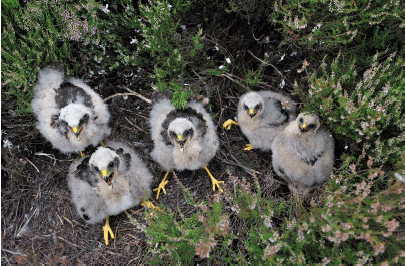
Hen harrier chicks © Lorne Gill SNH
Basic ecology:
Hen harriers are medium sized raptors which take a wide range of small to medium sized birds and mammals. They nest on the ground in long vegetation usually heather or other moorland vegetation. Whilst they breed in upland areas most migrate to lowland and coastal habitats for the winter. Distances vary with most staying within the UK but some reach the continent. They form communal roosts out with the breeding season.
Current population in Scotland:
The most recent national survey was in 2016 and the population was estimated at 460 pairs.
The species is found widely across the country but has breeding concentrations in Orkney, some west coast islands and Argyll mainland. The species is much scarcer elsewhere but widely distributed.
Population trends:
The population has decreased since the previous national survey in 2010; however numbers are stable or have recovered in Orkney and some west coast islands. The species has recently attempted to colonise Lewis in the Outer Hebrides. There have been declines over much of the central and eastern Highlands and Southern Uplands. The numbers of birds breeding in any one year is partly influenced by the vole population which is subject to cyclical population crashes every 3-4 years. This can mean that locally or regionally harrier numbers can increase and decrease in response to these cycles.
Factors affecting the health of the population:
Natural mortality can include starvation during the winter as well as disease. The factors affecting hen harrier distribution and population size have been analysed in the JNCC Hen Harrier Conservation Framework (Fielding et al 2011). Loss or degradation of breeding and foraging habitat through land use change can affect the species locally, as can predation by foxes. However, the species has been at the centre of the raptor game management conflict and regionally illegal persecution is the most significant factor affecting the species.
Monitoring:
Around two-thirds the breeding population is monitored annually by Scottish Raptor Study Group members and other volunteers (Challis et al 2018). PAW Scotland run the Heads up for Harrier initiative annually to raise awareness of the issues around the species and to encourage landowners to participate in a nest camera scheme.
‘Health’ of the species:
Whilst hen harrier numbers in Orkney have recovered from a decline caused by factors affecting their key prey Orkney voles and populations in some other areas are stable there have been declines over large areas of the range on the mainland of Scotland and the species is not fully occupying its potential range in Scotland.
References
Challis, A., Wilson, M.W., Holling, M., Roos, S., Stevenson, A. & Stirling-Aird, P. (2018). Scottish Raptor Monitoring Scheme Report 2017. BTO Scotland, Stirling.
Fielding et al 2011. A conservation Framework for Hen Harriers in the United Kingdom. JNCC report 441.
Health of species - Peregrine falcon
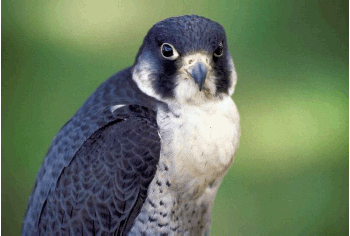
Peregrine © Lorne Gill SNH
Basic ecology:
Peregrines are medium sized raptors which take a wide range of small to medium sized birds mainly. The majority nest on natural cliffs or crags although some nest on man-made structures and in quarries. Adults can remain on territory all year. They are widespread being found from the coast through the lowlands and into upland habitats. Some have taken to urban nesting.
Current population in Scotland:
The most recent national survey was in 2014 and the population was estimated at 516-538 pairs (Wilson et al in press). The species is found widely across the country but is rare or scarce in Shetland and parts of the north and west Highlands and some islands.
Population trends:
The population has decreased since the previous national survey in 2002 with some further declines in the north and west and in some upland areas. Coastal and lowland populations are generally stable or have increased marginally.
Factors affecting the health of the population:
Natural mortality can include collisions with power lines and starvation during the winter as well as disease. There has been a long term decline in parts of the north and west which is continuing. Reasons for this are not fully understood but changes in prey availability and bioaccumulation of contaminants, from feeding on seabirds, are likely to be involved. It is possible that intraguild impacts of a recovering golden eagle population may be suppressing peregrine numbers locally. In other areas, changes in racing pigeon routes and timings may have affected distribution and breeding performance. Illegal persecution from both pigeon fanciers and game management interests remains a regional concern for some inland and upland populations.
Monitoring:
Around half the breeding population is monitored annually by Scottish Raptor Study Group members and other volunteers (Challis et al 2018).
‘Health’ of the species:
Whilst at a UK level the recovery of peregrine from pesticide issues in the 1950-60s has been a conservation success story the Scottish population is in decline. More study is required to better understand this decline as it is not solely due to illegal persecution.
References
Challis, A., Wilson, M.W., Holling, M., Roos, S., Stevenson, A. & Stirling-Aird, P. (2018). Scottish Raptor Monitoring Scheme Report 2017. BTO Scotland, Stirling.
M. W. Wilson, D. E. Balmer, K. Jones, V. A. King, D. Raw, C. J. Rollie, E. Rooney, M. Ruddock, G. D. Smith, A. Stevenson, P. K. Stirling-Aird, C. V. Wernham, J. M. Weston & D. G. Noble (2018) The breeding population of Peregrine Falcon Falco peregrinus in the United Kingdom, Isle of Man and Channel Islands in 2014, Bird Study, 65:1, 1-19
Health of species - Red kite
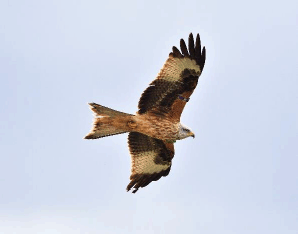
Red kite © Lorne Gill/SNH
Basic ecology:
Red kites are a large raptor which has a wide diet. It is an opportunist scavenger eating a wide range of carrion and live prey mainly comprising small mammals, small birds and insects. They nest in trees mostly on small woods or near the edges of larger woods. They are found mostly on lowland or upland edge habitats, although they will visit moorland. They are social birds especially outwith the breeding season and form communal roosts which can number scores of birds in Scotland.
Current population in Scotland:
Whilst wandering kites can now be seen in almost any part of Scotland occasionally, there are four main population centres based around original release areas for the reintroduction. These are in North Scotland (Black Isle), Aberdeenshire, Central Scotland (Perthshire/Stirlingshire) and Dumfries & Galloway. The Aberdeenshire and Perthshire populations are meeting now in Angus whilst the Dumfries & Galloway population continues to spread northwards along the main river valleys. Large numbers can be seen in the winter at the feeding stations at Tollie (North Scotland), Argaty (Central Scotland) and Bellymack (Dumfries & Galloway) which are significant tourist attractions.
The majority of the breeding population is monitored annually but it is no longer full coverage due to the speed of growth of the population. In 2017 there was a minimum of 228 pairs in Scotland (Challis et al 2018), however the UK Red Kite Group estimates that the Scottish population is probably approximately 300 pairs now.
Population trends:
Increasing after successful reintroduction, however the growth of the populations is varied with the North Scotland one in particular suffering slow growth due to illegal persecution. The other populations are all increasing and showing good productivity.
Factors affecting the health of the population:
The reintroduced population is self-sustaining and generally increasing, however the growth of the North Scotland population has been hampered by illegal persecution. In 2016, SNH produced a commissioned report (Sansom et al 2016) assessing whether there had been improvement in the health of that population since an earlier scientific paper highlighting the issue (Smart et al 2010). It concluded that there was no evidence that the level of illegal persecution had declined since the previous study.
Red kites are subject to natural mortality and their scavenging habits can make them vulnerable to collisions with vehicles and power lines. They have also been recorded as collision casualties at wind farms and are vulnerable to the effects of bioaccumulation of rodenticides through preying on small mammals.
Monitoring:
There is annual monitoring of a large proportion of the breeding population by Scottish Raptor Study Group members and other volunteers and an annual winter roost coordinated count.
‘Health’ of the species:
Red kites are currently doing well nationally but there remain concerns about impacts of illegal persecution regionally.
References
Challis, A., Wilson, M.W., Holling, M., Roos, S., Stevenson, A. & Stirling-Aird, P. (2018). Scottish Raptor Monitoring Scheme Report 2017. BTO Scotland, Stirling.
Sansom, A., et al. 2016. Population modelling of North Scotland red kites in relation to the cumulative impacts of wildlife crime and wind farm mortality. Scottish Natural Heritage Commissioned Report No. 904.
Smart, J., et al. Illegal killing slows population recovery of a re-introduced raptor of high conservation concern – The red kite Milvus milvus. Biol. Conserv. (2010)
PAW Scotland Raptor group
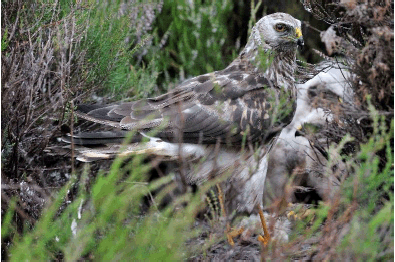
Hen harrier © Lorne Gill SNH
The Raptor Group, chaired by Police Scotland, continued to consider prevention, intelligence and enforcement issues regarding the persecution of birds of prey. The group met in May and November 2017. Police Scotland provided regular updates on reported crimes involving raptor species and all partners were asked to brief the group in respect of on-going work that they are involved in to tackle issues of raptor persecution.
In 2017 this included the creation of the annual bird of prey persecution maps and the on-going work on the Hen Harrier Action Plan.
As with previous years, the Heads Up for Harriers project continued to be the largest single project for the group; the aim of the project being to understand more about the distribution of hen harriers and why nests fail.
Members of the public continued to provide sightings, and several estates agreed to have cameras installed on hen harrier nests in their grounds. The project saw a sharp increase in participating estates, from five in 2016 to 21 in 2017.
The group noted that while raptor crime figures for April-August 2017 were slightly lower, one major investigation in the Scottish Borders involved multiple carcasses. They discussed the fall in the number of birds submitted for investigation of suspected criminality and reasoned that this may be due to birds being shot and carcasses removed. Intelligence on raptor crime was still coming in though, and the plan to recruit wildlife and rural special constables should help with community intelligence.
4.8 Fox Hunting and the Protection of Wild Mammals (Scotland) Act 2002
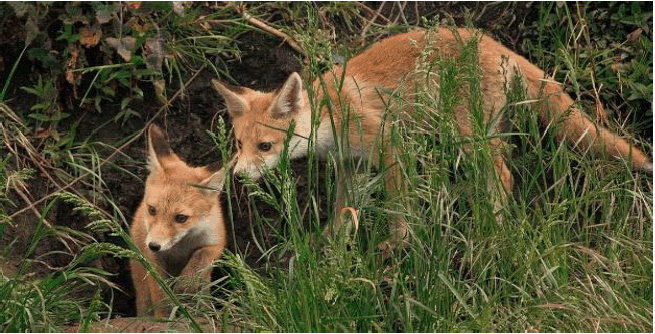
Foxes at the Water of Leith © Richard Hastings
This section highlights offences under the Protection of Wild Mammals (Scotland) Act 2002. Section 1 of the 2002 Act prohibits the deliberate hunting of a wild mammal with a dog (subject to certain exceptions). The Act is most commonly used in connection with hare coursing, although it has also been used for incidents relating to foxes, deer and badgers. It does not prohibit the hunting of rabbits or rats by dogs.
Recorded crime
The recorded crime statistics in Table 29: Protection of Wild Mammals (Scotland) Act 2002 ‘hunting with dogs’ offences 2016-17 by Police Scotland Division and
Figure 9 shows the figures for 2016-17. Table 30 shows a quarterly breakdown of 2016-17.
Table 29[6]: Protection of Wild Mammals (Scotland) Act 2002 ‘hunting with dogs’ offences 2016-17 by Police Scotland Division
| Police Division | Target species | Number of offences |
|---|---|---|
| Dumfries and Galloway | Deer | 1 |
| Fox | 1 | |
| Hare | 2 | |
| North East | Hare | 3 |
| Fife | Hare | 1 |
| Renfrewshire and Inverclyde | Deer/fox | 1 |
| Tayside | Hare | 3 |
| The Lothians and Scottish Borders | Deer | 1 |
| Fox | 1 | |
| Hare | 8 | |
| Total | 22 |
Source: Police Scotland
Table 30: Protection of Wild Mammals (Scotland) Act 2002 ‘hunting with dogs’ offences 2016-17 by species and quarterly breakdown
| Target Species | Apr-Jun | Jul-Sep | Oct-Dec | Jan-Mar | Total |
|---|---|---|---|---|---|
| Deer | 1 | 1 | 2 | ||
| Deer/fox | 1 | 1 | |||
| Fox | 1 | 1 | 2 | ||
| Hare | 4 | 4 | 3 | 6 | 17 |
| Grand Total | 5 | 4 | 5 | 8 | 22 |
Source: Police Scotland
Figure 9 below shows that from the now disaggregated data from Police Scotland, three of the 22 hunting with dogs cases related to fox hunting offences, rather than activities such as hare coursing.
Figure 9 Police Scotland disaggregated offence data for fox hunting
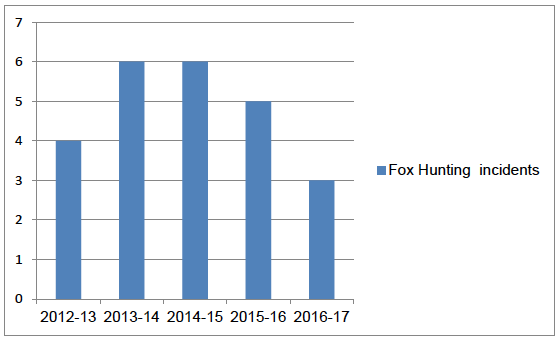
Source: Police Scotland
Prosecutions
For the period 2010-2017, fewer than five cases relating to fox hunting were reported to COPFS. All were prosecuted.
4.9 Trapping and Snaring
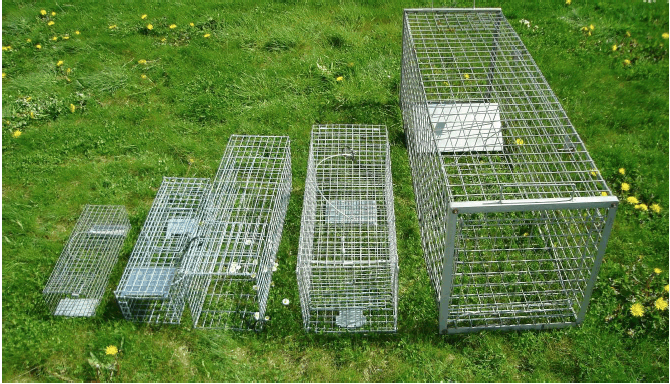
Different trap sizes © Gill Hartley SASA
Trapping and snaring are methods which can be legitimately used for the control of some types of wildlife such as corvids, rodents or foxes. This may be for conservation purposes, to protect agricultural or sporting interests or for human health and safety reasons. However, the use of traps and snares is subject to legal restrictions designed to prevent harm to non-target species or unnecessary cruelty.
Recorded crimes
Trapping and snaring figures are not shown as part of the recorded crime statistics in Table 1 as the offence data cannot be broken down to that level.
The Police Scotland disaggregated offence data in Table 15 shows that 15 offences were recorded for 2016-17. This remains unchanged from the previous year with 15 offences recorded for 2015-16 but is also a decrease from the 27 offences recorded for 2014-15.
Table 31 shows that there is no spatial bias to recorded trapping and snaring offences in 2016-17.
Table 31: Trapping and snaring offences 2016-17 by Police Scotland Division
| Police Division | Type of offence | Target Species | Number of offences |
|---|---|---|---|
| Tayside | Spring trap | Unknown | 2 |
| Spring traps and snares | Unknown | 1 | |
| Lothian and Scottish Borders | Crow cage | Crow | 1 |
| Renfrewshire and Inverclyde | Snare | Unknown | 1 |
| Argyll and West Dunbartonshire | Snare | Domestic cat | 2 |
| Highlands and islands | Snare | Fox | 1 |
| Spring trap | Unknown | 2 | |
| Snare | Rabbit | 1 | |
| Lanarkshire | Snare | Unknown | 1 |
| Spring trap | Wild birds | 1 | |
| Ayrshire | Snare | rabbit | 1 |
| Snare | Domestic cat | 1 | |
| Total | 15 |
Source: Police Scotland
Table 32 shows a slight bias towards offences occurring from April to September. This may be associated with an increase in trapping and snaring activity during these months and/or an increase in detection due to increased recreational use of the countryside during this time.
Table 32: Trapping and snaring offences 2016-17 by quarterly breakdown
| Type of Crime | Apr-Jun | Jul-Sep | Oct-Dec | Jan-Mar | Total |
|---|---|---|---|---|---|
| Crow cage | 1 | 1 | |||
| Snare | 5 | 3 | 8 | ||
| Spring trap | 1 | 2 | 1 | 4 | |
| Spring trap and snares | 1 | 1 | |||
| Unknown | 1 | 1 | |||
| Total | 7 | 2 | 6 | 15 |
Source: Police Scotland
Figure 10: Police Scotland disaggregated offence data for trapping and snaring 2013-14 to 2016-17
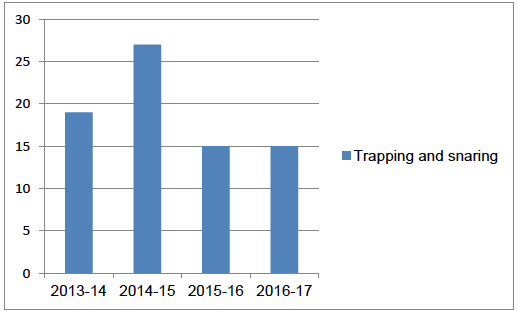
Source: Police Scotland
The Scottish SPCA identified four incidents relating to trapping or snaring offences which were investigated solely by its SIU inspectors. This compares to 35 for 2015-16.
Fifteen cases relating to trapping or snaring or both were reported to COPFS in the period 2016-17.
Contact
Email: Hugh Dignon
There is a problem
Thanks for your feedback